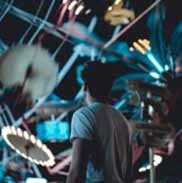Actor Observer Bias Flashcards, test questions and answers
Discover flashcards, test exam answers, and assignments to help you learn more about Actor Observer Bias and other subjects. Don’t miss the chance to use them for more effective college education. Use our database of questions and answers on Actor Observer Bias and get quick solutions for your test.
What is Actor Observer Bias?
Actor-observer bias is a cognitive bias that occurs when an individual attributes their own behavior to external factors, while attributing the behaviors of others to internal factors. This type of psychological effect can lead to misunderstandings and inaccurate judgments about other people’s motives and intentions.At its core, actor-observer bias stems from how we choose to explain our own behaviors versus those of others. When we are in the ‘actor’ role, meaning we are responsible for our own actions, we tend to view ourselves as victims we emphasize uncontrollable external forces such as luck or circumstance as opposed to taking ownership for our actions. On the flip side, when viewing another person’s behavior (the observer), we often attribute it to internal traits like personality or character flaws essentially making assumptions about their motivations without considering potential outside influences. As a result, this cognitive distortion can lead us down a path toward misjudging someone else’s character instead of recognizing situational variables that could be driving their behavior. In terms of reducing the effects of actor-observer bias within social settings, there are several approaches one can take: firstly, becoming aware that this phenomenon exists at all; secondly, practicing conscious empathy towards yourself and others by understanding each situation on a deeper level before forming an opinion; thirdly being open and honest with yourself so you don’t overlook any relevant information; and finally being willing to entertain alternative explanations before jumping straight into criticism or judgment mode. The implications of actor-observer bias should not be taken lightly it has serious consequences in both personal relationships and professional contexts alike if left unchecked. Being mindful of this cognitive distortion will help ensure your interactions with others remain balanced and fair.









